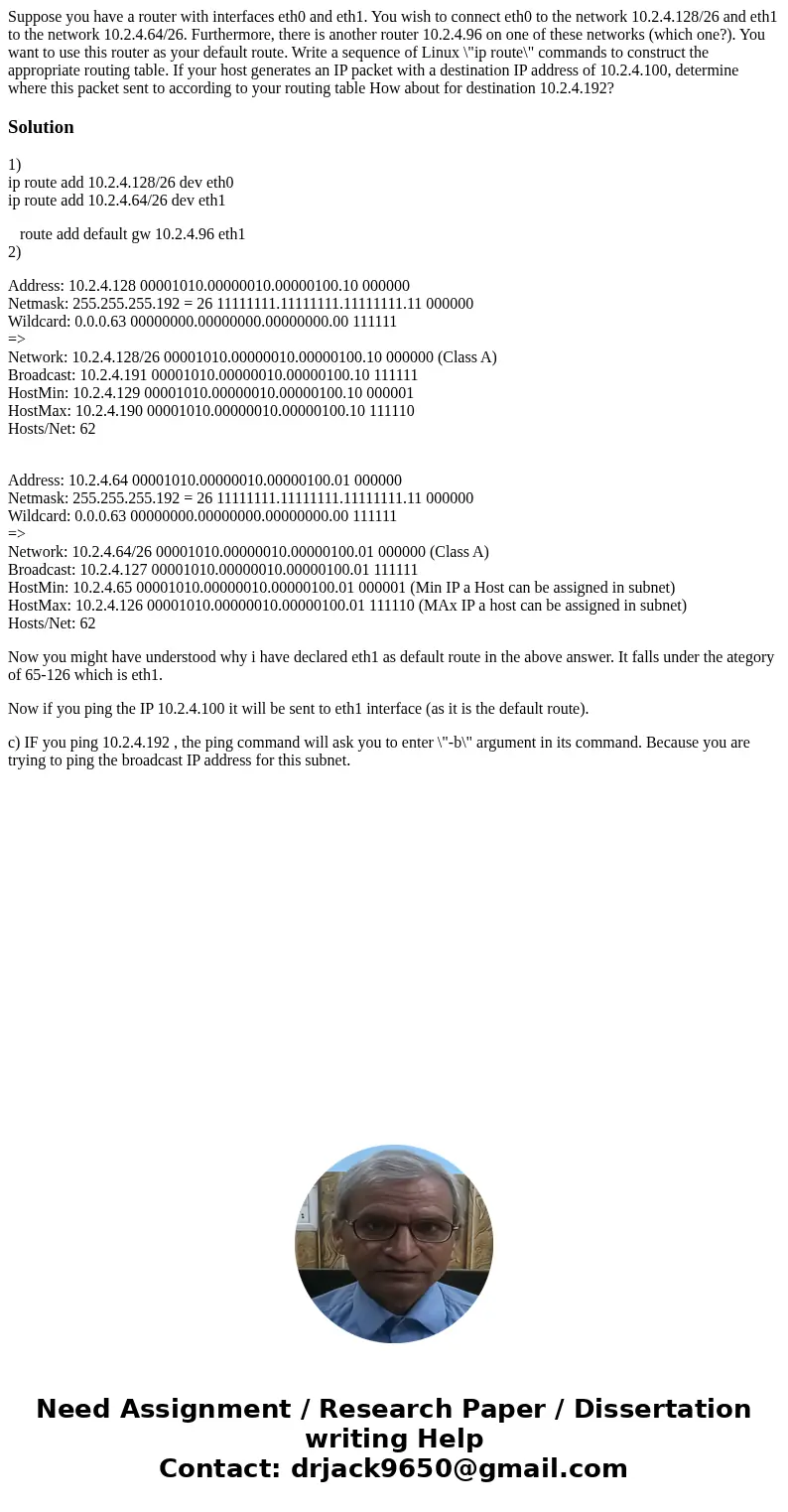Suppose you have a router with interfaces eth0 and eth1 You
Solution
1)
ip route add 10.2.4.128/26 dev eth0
ip route add 10.2.4.64/26 dev eth1
route add default gw 10.2.4.96 eth1
2)
Address: 10.2.4.128 00001010.00000010.00000100.10 000000
Netmask: 255.255.255.192 = 26 11111111.11111111.11111111.11 000000
Wildcard: 0.0.0.63 00000000.00000000.00000000.00 111111
=>
Network: 10.2.4.128/26 00001010.00000010.00000100.10 000000 (Class A)
Broadcast: 10.2.4.191 00001010.00000010.00000100.10 111111
HostMin: 10.2.4.129 00001010.00000010.00000100.10 000001
HostMax: 10.2.4.190 00001010.00000010.00000100.10 111110
Hosts/Net: 62
Address: 10.2.4.64 00001010.00000010.00000100.01 000000
Netmask: 255.255.255.192 = 26 11111111.11111111.11111111.11 000000
Wildcard: 0.0.0.63 00000000.00000000.00000000.00 111111
=>
Network: 10.2.4.64/26 00001010.00000010.00000100.01 000000 (Class A)
Broadcast: 10.2.4.127 00001010.00000010.00000100.01 111111
HostMin: 10.2.4.65 00001010.00000010.00000100.01 000001 (Min IP a Host can be assigned in subnet)
HostMax: 10.2.4.126 00001010.00000010.00000100.01 111110 (MAx IP a host can be assigned in subnet)
Hosts/Net: 62
Now you might have understood why i have declared eth1 as default route in the above answer. It falls under the ategory of 65-126 which is eth1.
Now if you ping the IP 10.2.4.100 it will be sent to eth1 interface (as it is the default route).
c) IF you ping 10.2.4.192 , the ping command will ask you to enter \"-b\" argument in its command. Because you are trying to ping the broadcast IP address for this subnet.

 Homework Sourse
Homework Sourse